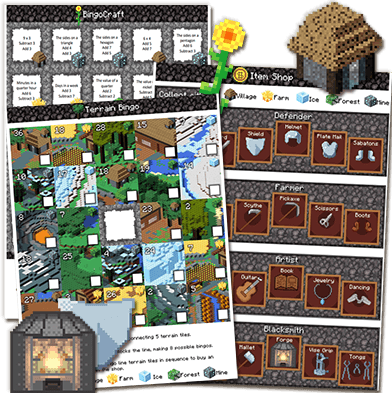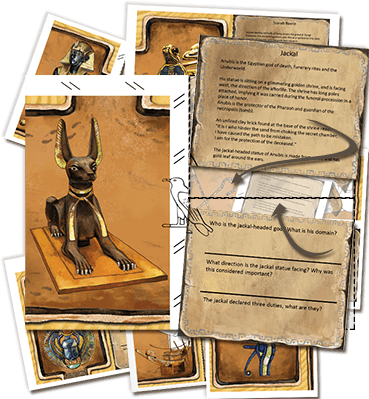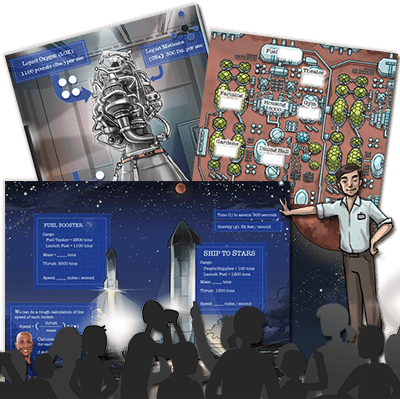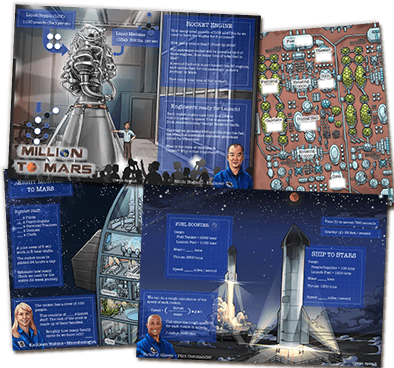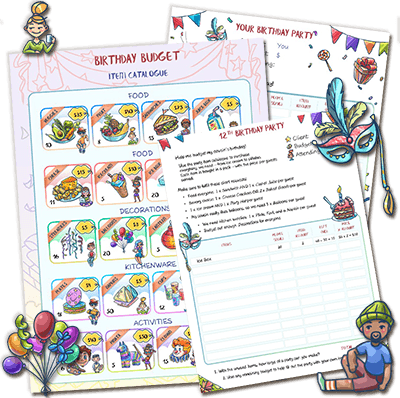Free 4th Grade Multiplicative Comparison Worksheets
Give yourself a break - cut down on prep time for your next lesson by using these free printable worksheets!
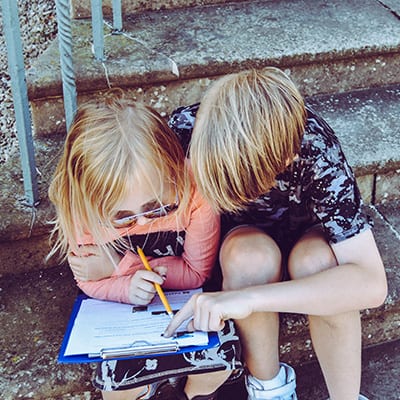
Multiply the Fun! Learning Multiplicative Comparison

Hold up! We're sure that this is the best classroom gamification strategy you'll ever see. Check out how you can reignite classroom engagement with an escape room game.
Get ready to multiply the fun and learning with your 4th graders!
Your students first learned multiplication and division in 3rd grade. So, this is a great opportunity for them to flex those skills in new ways! Practice makes perfect, so we’ve got plenty of free downloadable worksheets for you.
And, your students will have a blast while they practice with the fun gamification strategies we share! (they work for homeschool too!)
Not quite sure how to get started with it all? No worries, we also go into how you can introduce the topic to your students.
Read on!
...psst... we've also got some more multiplication worksheets for you here...
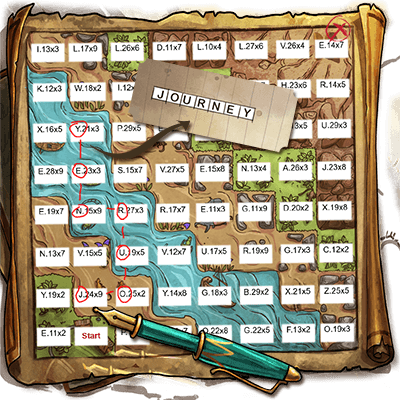
Ready to Level-up your math game?
These printable activity sheets instantly transform 'boring' math lessons into daring action-adventure treasure hunts!
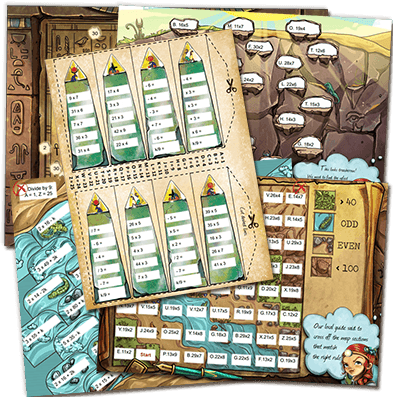
What Awesome New Skills Will My Students Learn?
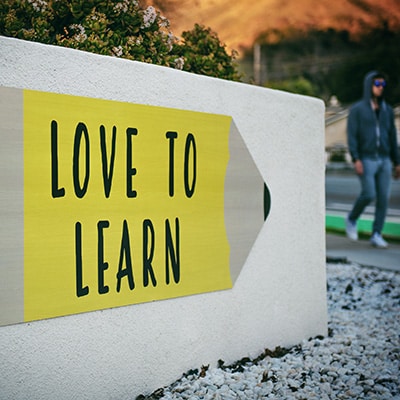
Maths is all about equipping students with real-world thinking skills. This worksheet does that, by teaching students to budget in a fun and simple way! Check it out
Let's hone in on our learning goal! Multiplicative comparison simply means comparing numbers by a factor or multiple. For example, ten cups of coffee are five times as many as two. But you won’t need buckets of coffee to put together these lessons for your students. We’re here to serve up the perfect lessons to help your students succeed - and move towards the next steps of their STEM learning.
By the end of these lessons, your 4th grade students will be able to:
- Describe multiplication equations as a comparison (Y is X times as much as Z)
- Write comparative statements as equations
- Make drawings to solve word problems
- Write and solve equations for word problems, using a symbol for the unknown number
- Recognize when to use multiplicative vs. additive comparison
In this way, your students will master CCSS.Math.Content.4.OA.A.1, interpret a multiplication equation as a comparison, and CCSS.Math.Content.4.OA.A.2, multiplying or dividing to solve word problems by using drawings and equations with a symbol for the unknown number.
Hold Up. Check a Few Things First.
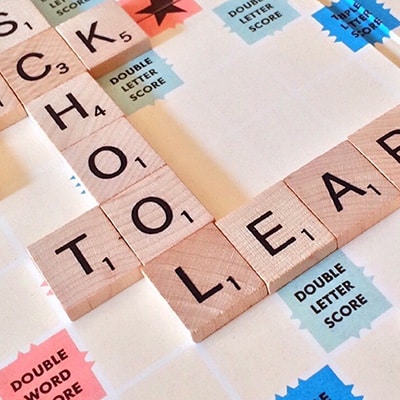
We want every student to rock this learning! So, a quick pre-test can tell us if our students have the prerequisite skills they need to be successful. In 3rd grade, students should have learned how to multiply and divide. Additionally, students should be familiar with additive comparison, where they determine the difference between two numbers. Understanding of the following vocabulary will also help:
- Equation
- Factor
- Interpret
- Multiple
- Product
Let’s Get Teaching!

Here's where it all comes together! Let’s take a look at how to introduce and teach these concepts.
Start with a Story and Open-Ended Question
Young people are very concerned with being fair, so we might share this story, for example:
"My son is older now, but he has always loved eating, especially fruit. If we let him, he would gobble up a whole tray of blueberries, leaving nothing for us. Well, that wouldn’t be fair, right? He was maybe only 2 feet tall, and I was almost 6 feet tall. And, the bigger you are, the more you need to eat to keep your energy up. So, if my son ate 10 blueberries, what would be a fair amount of blueberries for me to get to eat?"
An open-ended question like this can spark creative thinking and draw in students of all ability levels. As students share out, remember there are no wrong answers. Just look for students using mathematical reasoning to justify their answers. For example, some students may have used additive comparison. Because I was 4 feet taller, they think I should get 4 more blueberries than my son, for a total of 14. Alternatively, some students may suggest that because I was three times taller, I should get three times as many blueberries. 30 is 3 times as many as 10. This is a multiplicative comparison, and we can show it as an equation: 3 x 10 = 30. And, now students have an intuitive understanding of the concept and when it might be used!
Create a Math Vocabulary Anchor Chart
Consider building an anchor chart with your class! Be sure to include “times as much as”, “times bigger than”, and “times as many as”. Students can refer to this chart when describing equations or interpreting word problems throughout the lesson.
Give Students Choice
Let imaginations run wild as students work in pairs or individually to turn multiplication equations into stories using those math vocabulary terms. As students make visuals to represent their word problems, give them options. The more choices they have between pencil, pen, crayon, markers, chalk, or digital art, the more engaged they will be. At the end, students might even share their favorite math art creations in a gallery walk!
Practice Makes Perfect
Check out the recommendations below on how to transform boring worksheets into fun and games. Once students have gotten comfortable with these word problems, mix it up by including some additive comparison problems too! Interleaving different problem types is a big brain booster for retention, so this is a great way to wrap up the topic.

Gamify Early Practice!

See how it works - we've put together a math activity kit that combines the best bits of worksheet practice and storytelling.
Just handing out worksheets doesn’t cut it these days. But, there are easy ways to make any resource an engaging social activity or game!
When students are starting out with a concept, collaborative games are best. Without the fear of losing, the focus can just be building those new brain pathways. All you need is a worksheet to try the fun skill-building activities below - perfect for classrooms and home school activities alike:
Reciprocal Learning
Buddy up for some social learning with reciprocal learning! Partners trade off working one problem, while the other partner cheers for them, coaches them and checks their answer on the key. Then they switch roles. One partner can do the odd problems and the other can do the even problems to complete a worksheet together!
We like to have a pair of students model how the learning will work for the class. We also find that it helps if pairs of students share one paper and one pencil so that no one works head. When we make the answer key, we make two. One key has just the even answers, and the other has just the odd answers. This way students don’t accidentally see the answers for their own problems.
Quiz Quiz Trade
Quiz Quiz Trade gets students up and moving, and doing reciprocal learning with different partners! Cut out each problem on the sheet into strips. On the back, write the answer. Give each student one question strip and the fun can begin! Students stand up and move about the room to find a partner. Students take turns answering their partner's question. Partners can cheer and coach their buddy if they need a hint. After the partners answer each other’s questions, they trade questions and move to find a new partner. We love that students share problems they’ve already worked out themselves. This grows their confidence and helps them be better coaches!
To maximize learning with this game we like to model this one with two pairs of students for the whole class. It can also be useful to teach students to raise their hands when they need a partner. This helps students pair up more quickly. We like to make an expectation that students partner with the nearest free person so that they meet with as many new faces (and problems) as possible!
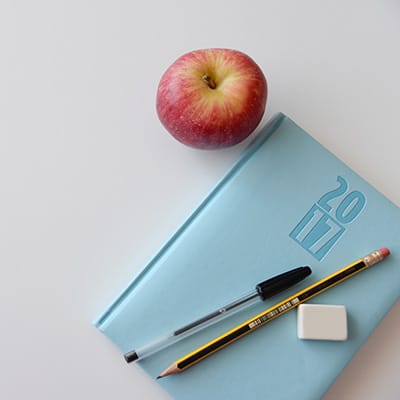
Practice with Friendly Competition!

Once students have gotten more confident in their skills, we like to introduce more games with friendly competition. Here are some fun ones to try:
Showdown
In groups of four or five, Showdown lets students take turns leading their team in non-competitive practice! Give one worksheet to one student in each group. This student will start off as the Showdown Captain. The captain shares the problem, and gives the other students in the group time to answer the question on their paper or mini whiteboard. When everyone is finished or time is up, the captain says, “Showdown!” and everyone shows their work to the group. The captain leads the group in comparing the work and discussing the different approaches and correct answer. Then, the captain hands the problem sheet to the person next to them and the new captain leads the next question.
Group Contest
A group contest can turn any set of practice problems into a friendly competition! Groups compete against one another to answer the most questions correctly and win! To even the playing field with students of different abilities, it’s useful to have an element of chance thrown in. For example, we like to have teams shoot a ball in a basket to double their points when they get correct answers. Or we get out a game like Connect 4 and have two teams compete. Every correct answer they get lets them make one move, but the added strategy of playing the game ensures that not just the fastest team wins.
Online Quiz Games
Gimkit, Kahoot, and Quizziz, oh my! There are many online quiz games out there that you can use to digitize your problem sets into games! Check with your district for any restrictions or recommendations for certain tools you can use with your class. Whatever tool you choose, you can type in your problems or upload each problem as a picture. Then, you're ready to play! Students love the friendly competition of these games!

Steaming Hot Resources, Just for You!

You’ll find all the resources to make the magic happen below!
Enjoy the free downloadable worksheets to help your 4th grade students soar with these concepts!
Your Next Lesson Is Already Done.
Treat yourself to an easy lesson with a classroom-ready, curriculum-aligned activity kit.
Each classroom activity works by transforming the lesson into an engaging game that gets students invested.
You'll spark your students creativity, develop their critical thinking, and reclaim a little breathing space all in one genius move.
Just download a kit, print it out and instantly become the cool teacher!
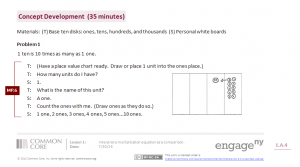 4.OA.1 & 4.OA.2 - 4th Grade Multiplicative Comparison Worksheets
4.OA.1 & 4.OA.2 - 4th Grade Multiplicative Comparison Worksheets
Use the four operations with whole numbers to solve problems.
CCSS.Math.Content.4.OA.A.1
Interpret a multiplication equation as a comparison, e.g., interpret 35 = 5 × 7 as a statement that 35 is 5 times as many as 7 and 7 times as many as 5. Represent verbal statements of multiplicative comparisons as multiplication equations.
CCSS.Math.Content.4.OA.A.2
Multiply or divide to solve word problems involving multiplicative comparison, e.g., by using drawings and equations with a symbol for the unknown number to represent the problem, distinguishing multiplicative comparison from additive comparison.1
Teacher Notes
Multiplicative comparisons allow us to focus on the comparison of two quantities by showing that one quantity is a number of times larger or smaller than the other, whereas additive comparisons focus on the difference between two quantities. Understanding these concepts allows students to solve word problems and demonstrate their understanding through drawings and equations.
Student Knowledge Goals
I understand situations of multiplicative comparison.
I know how to read a multiplication equation.
I know strategies to solve multiplication problems.
I know the ratio is constant in a multiplicative comparison.
I understand what an additive comparison is.
I know strategies to solve multiplication and division problems.
I know multiplication and division are inverse operations.
Vocabulary
equation
factor
interpret
multiple
multiplicative comparison
product
Lessons
Engage NY Module 1 A-1 - Includes printable classwork and homework
Engage NY Module 3-A1 - Includes printable classwork and homework
*4.OA.A.3 also covered
Learn Zillion - Understand multiplicative comparison by comparing it to additive comparison
Multiplicative Comparisons
4.OA.A.1 and 4.OA.A.2 Lesson A - Includes printable classwork and homework
4.OA.A.1 and 4.OA.A.2 Lesson B - Includes printable classwork and homework
4.OA.A.1 and 4.OA.A.2 A&B Answers
Student Video Lessons
Learn Zillion - Interpret multiplication as a comparison
Learn Zillion - Solve word problems using multiplicative comparisons
Virtual Nerd – 4.OA.A.1
Virtual Nerd – 4.OA.A.2
Online Problems and Assessments
Khan Academy - Questions and Video Lessons
Missing Factors
Multiplicative Comparisons
Printables
Multiplicative Comparisons I
4.OA.A.1 and 4.OA.A.2
Multiplicative Comparisons II
Multiplicative Comparisons Activity & Worksheet
